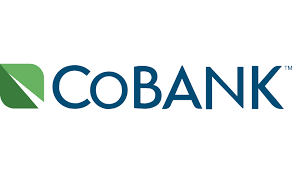CoBank | July 14, 2022
Effects from the pandemic and Ukraine war continue to reverberate through the global economy. Food and energy prices remain high, though prices for underlying commodities have lost upward momentum as economic fears rise. The drop in commodity prices and recent bond yield inversions are sending up red flags about slowing economic activity and a potential oncoming recession.
The Federal Reserve is poised to raise rates until it believes inflation has been tamed. Unfortunately, the risk of over- or under-doing it is high given that the lag time between action and reaction in monetary policy can be long. For now, the Federal Reserve has the data it needs to move forward with a 75 basis point rate increase in July, and will be poised for another 50 or 75 basis point hike in September.
After more than two years, Covid-related supply chain complications are finally easing and various metrics indicate improvements to supply chain performance both domestically and globally. However, those improvements have been modest and agricultural supply chains in particular remain broadly mired in dysfunction, according to a new quarterly report from CoBank’s Knowledge Exchange.
“Warehouse and inventory costs are still rising at near-peak levels, and transportation costs are rising at a much higher rate than pre-pandemic,” said Dan Kowalski, vice president of CoBank’s Knowledge Exchange. “Grain rail car availability and prices were at multi-year lows and highs, respectively, in the second quarter. Although as consumer purchases of goods continues to soften, supply chains will slowly recover.”
While agricultural and energy commodity supplies remain tight, shifts in speculative sentiment have brought prices down from their peaks. For agriculture, replenishing grain and oilseed supplies globally will require two growing seasons. And there is no relief in sight for natural gas supplies, ensuring power prices will remain high as well.
Grains, Farm Supply & Biofuels
Grain prices remained volatile in Q2 as markets continually reassessed a range of factors including the war in Ukraine, a smaller Brazilian soybean crop and ongoing dry conditions in the U.S. Wheat prices fell below $9.00/bushel as investors reduced their commodity exposure amid a rapidly cooling global economy. Grain and oilseed prices should experience upside pressure in the near term, due in part to tight global supplies of wheat and soybeans in particular.
Ag retailers navigated a challenging spring agronomy season marked by input cost inflation, planting delays and producer cost-cutting efforts. Fertilizer prices began to ease in June but are likely to remain elevated compared to long-term averages. Mid-year crop ratings are better than a year ago but warm and dry conditions across the Corn Belt may limit yields. Farm supply co-ops will face additional risks going into the fall agronomy season. Asian-made crop protection chemicals continue to be in short supply and interest rate hikes will make borrowing more costly.
The U.S. ethanol complex delivered a strong Q2 with few signs of demand destruction despite a spike in retail gasoline prices and rising inflation. Operating margins remained favorable at $0.33/gallon, well above the five-year average of $0.22/gallon. Ethanol exports hit a four-year high of 185 million gallons in April, resulting in year-to-date growth of 67% through the first four months of 2022.
Animal Protein & Dairy
Inflation is now the key risk to meat and poultry consumption, as the impact of COVID-19 on consumer food spending is diminishing. Retail meat and poultry prices were 18% higher in May compared to 2021 and both spot market supplies and freezer inventories are below pre-pandemic levels. The combination of tight supplies and steady demand kept meat prices 20% higher than the five-year average for the March-May period.
Beef cow culling remains elevated as cattle ranchers and feeders grapple with poor pasture conditions and higher corn and hay prices. Declining cattle supplies are expected to converge with excess processing capacity over the next 12-18 months, which should contribute to more favorable conditions for producers.
After several years of successful growth, U.S. pork exports are contracting in 2022 driven primarily by a reduction of exports to China. The volume of U.S. pork exports to China has fallen from over 160 million pounds per month in 2021 to about 40 million pounds per month in 2022.
Milk collections in the U.S. remained tight last quarter with record high milk prices prompting only a minimal expansion in the dairy herd. Despite tight supplies, milk continued to flow to cheese vats last quarter with cheese manufacturers building inventories to record levels. Conversely, U.S. butter inventories remain tight. High prices and strong demand for U.S. milkfat from both domestic and international sources pulled butter out of storage.














